

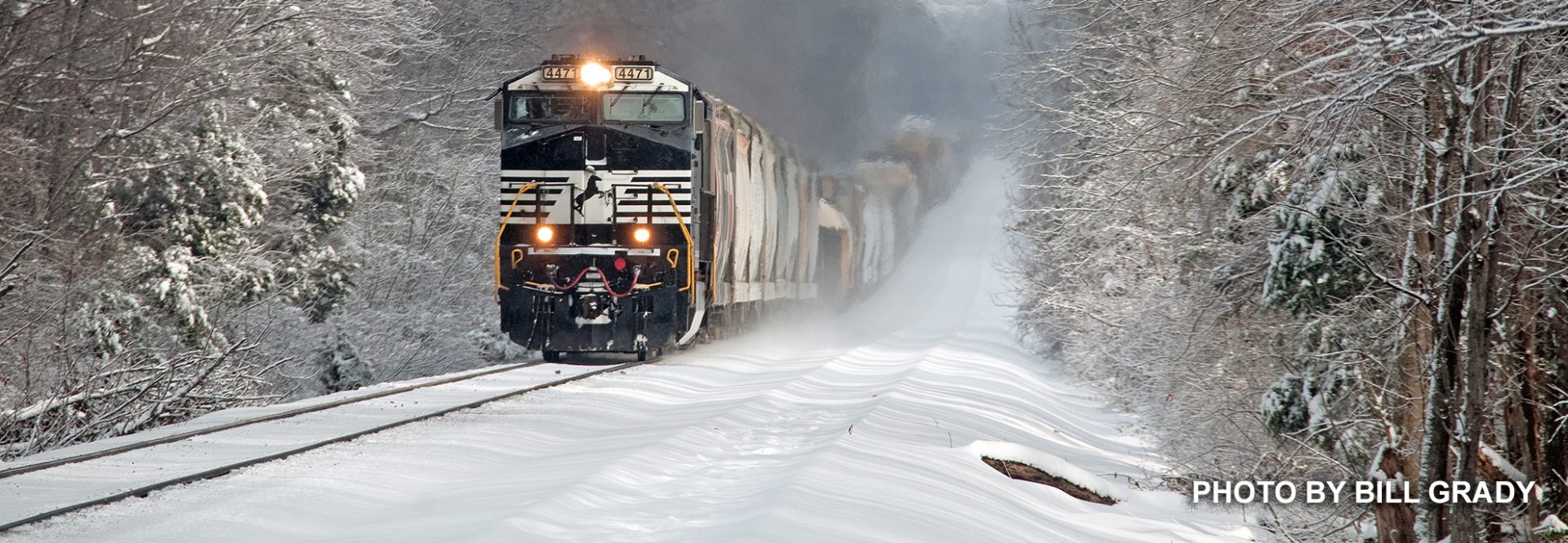

Photography by Dr. Frederick J. Ripley, PO Box 21491, Columbus, OH 43221, 614-949-2056fjripley68@gmail.com
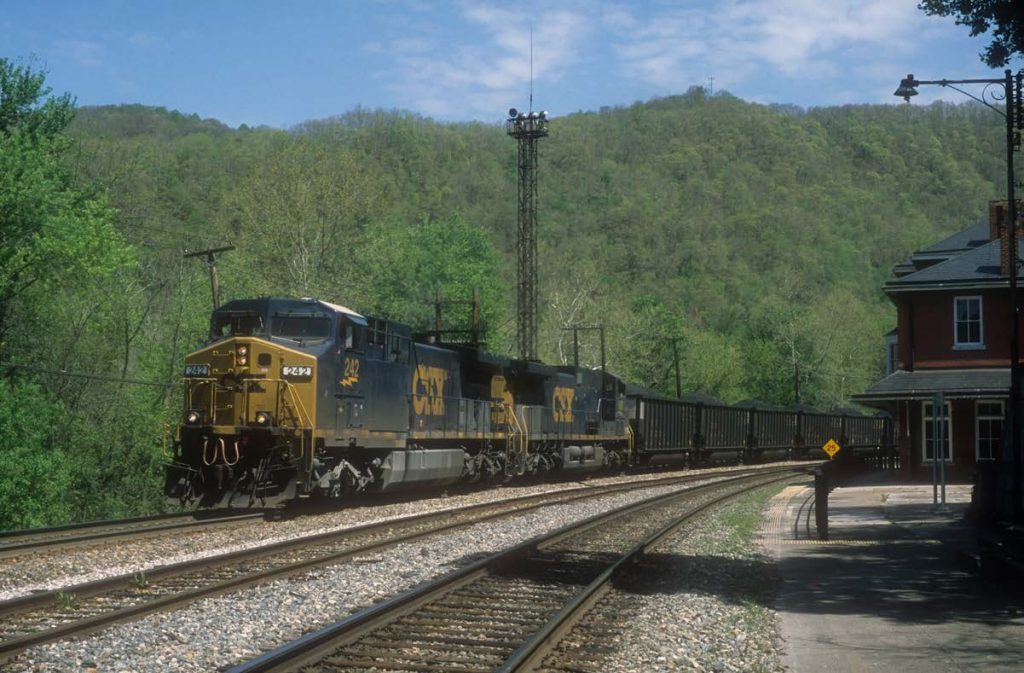
Entitled ’20 ’20 VISIONS: 100 YEARS OF WEST VIRGINIA RAILROADING, it features 27 of Ripley’s photographs
April 30 – October 30, 2021, at the West Virginia Railroad Museum in Elkins West Virginia Railroad Museum 2 Railroad Avenue Elkins, WV 26241 304-637-4810
OPEN 9:30 AM – 4:30 PM FRIDAYS, SATURDAYS, & SUNDAYS STARTING APRIL 30
The West Virginia Railroad Museum is pleased to present the work of nationally acclaimed railroad photographer Dr. Frederick J. Ripley as the centerpiece of their exhibit for the 2021 season. Entitled ’20 ’20 VISIONS: 100 YEARS OF WEST VIRGINIA RAILROADING, it features 27 of Ripley’s dramatic images taken throughout West Virginia and the surrounding region, all enlarged to 20” x 30” and framed under glass, accompanied by detailed caption information. All of Ripley’s photos are for sale, and all sales benefit the West Virginia Railroad Museum. The exhibit also includes a fascinating selection of older photos, maps from various eras, and detailed interpretive text panels. The museum is on the upper level of the historic Darden Mill building, a beautifully restored venue in this former railroad town. Staff and volunteers have worked tirelessly to create a safe environment, with frequent cleaning and sanitizing. Don’t miss this exciting exhibit about railroading in the Mountain State!
The year is 1968, the place: Bethel, Minnesota on the Great Northern line from the Twin
Cities north to the port cities of Duluth and Superior. Mail messenger Phil Fox is hanging a catcher
pouch of outbound mail on the crane.
Soon the southbound Badger, Train #23 from Duluth will fly by at 70 MPH and snag the pouch with a hook mounted in the Railway Post Office open car door. The clerk manning the hook will simultaneously toss a sack on inbound mail. The arms on the mail crane will collapse as a safety measure for other train crewman like the conductor standing in the vestibule.
This scene was repeated daily, hundreds of times on 1500 RPO routes across the country. The Railway Mail Service once employed 30,000 men in 4,000 RPO cars. These men sorted mail enroute, a service that many times included dispatching letters in pouches at stations that were snagged on the fly earlier in the same run.
It all came to an end on June 30, 1977 when the “New York & Washington,” in both directions, made their last runs. As
a sole survivor, this RPO run saw all the others “twilight” with the inception of AMTRAK in 1971. RPOs were victims of airlifting first class mail and the use of trucks.
A little editorial comment: When the RPOs were active, you could mail a letter in Seattle and have it delivered to a home in the Twin Cities on the 3rd day. Even with 500MPH jets today,?? forget it.
Photos by Don L.Hofsommer as seen in Classic Trains magazine, Fall 2006
Professor Hofsommer is a noted railfan/author, Submitted by Gary Ostlund
The shot at left was sent to me by Fred Ripley, former WKNRHS member now living in Columbus, OH. Fred has done a great deal of photography on the C&O as mentioned in my editorial. There’s a lot of Chessie heritage in this shot at Levisa Jct. 4070 et. al. is entering Coon Creek SD with empties for Johns Creek, May 7, 1978. Fred has scanned many of his slides for the book, Chesapeake & Ohio – The Decades of Change – 1961-1981. Several of his shots were used.
Towards the former west end of the larger of the two Chesapeake and Ohio yards in Hinton stands this monument to the steam era, an enormous coaling tower built in the style of C&O’s “modern” installations (also in this style is the much smaller coaling tower at Thurmond, WV, built in 1922 and seen in this up-close view on the right). Hinton was a critical facility for both classification and locomotive servicing on the main line across West Virginia. To the west, the New River Subdivision follows the course of the New River (some of the most spectacular scenery in the eastern U.S.), resulting in a route with many curves but with grades kept to a minimum. To the east, however, the Alleghany Subdivision, after following the course of the Greenbrier River, climbs to the summit at Alleghany, VA. Perhaps Hinton’s most famous role, late in the steam era, was dispatching eastbound loaded coal trains with two of the most powerful steam locomotives ever built, the C&O’s H-8 2-6-6-6 “Allegheny” class. Leaving Hinton, every coal train bound for Tidewater at Newport News was powered by an H-8 on the front, with a 2nd example of the class cut in in front of the caboose. The helper would remain there until the train crested the grade at Alleghany, at which point it would cut off and return light to Hinton. Photographs by Frederick J. Ripley
This view, taken on May 2, 2015, looks east on the former C&O main line at Alleghany, VA. At 2072 ft. above sea level, Alleghany is the summit of the C&O’s crossing of the mountains (note the spelling, “Alleghany”, vs “Allegheny” of PA and the PRR and B&O’s crossings). Coal here has always moved eastbound exclusively, towards tidewater at Newport News. In the final days of steam, loaded coal trains had two of the world’s most powerful steam locomotives, the C&O’s class H-8 2-6-6-6. The rear helper, put on at Hinton, WV, would cut off here, and return light to Hinton. With dieselization in 1956, the C&O settled on a standard lash-up of five GP9’s, which negated the need for a helper. Although long closed, the tower, “A Cabin” (cabin being the standard C&O term for interlocking towers) is in the classic C&O brick style, a plan used with variations system-wide. (photo copyright 2015 by Frederick J. Ripley).

Here’s a 1977 shot at the west end of the big C&O yard at Russell, KY (Russell is actually the town at the east end- Raceland is towards the west end, where the car shops were. This throat is actually in Wurtland). This is one of two original C&O signal bridges still in use in the area- the other is one block to the west, and is even neater as it has full aspects (not these limiting upper targets), both ways, on all three tracks. – Submitted by Fred Ripley

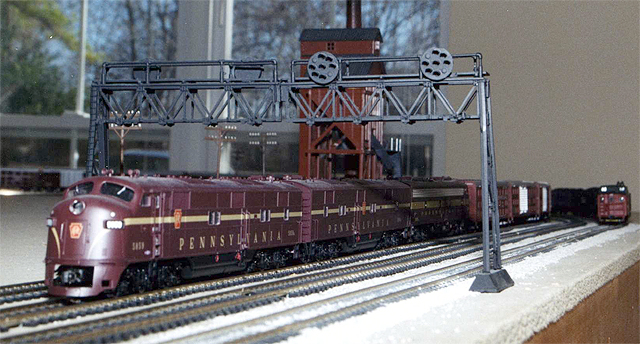 In the Spring of 1961, PRR hotshot NF-6 (“Non-Feed”), a livestock schedule from Chicago to Harsimus Cove, NJ, passes under the signal bridge at MP 127.7, just west of Orrville, OH on the Pittsburgh-Chicago main line. With cuts and consolidations in the railroad’s still massive passenger network, the PRR has taken advantage of surplus passenger power to assign E-units to the train on this day, suiting the high-speed nature of the schedule. In the distance, a westbound loaded coal train (“mineral train” in PRR terms) heads for the Lake Erie docks at Sandusky, OH. Submitted by Fred Ripley – photos on his Pennsylvania Layout.
In the Spring of 1961, PRR hotshot NF-6 (“Non-Feed”), a livestock schedule from Chicago to Harsimus Cove, NJ, passes under the signal bridge at MP 127.7, just west of Orrville, OH on the Pittsburgh-Chicago main line. With cuts and consolidations in the railroad’s still massive passenger network, the PRR has taken advantage of surplus passenger power to assign E-units to the train on this day, suiting the high-speed nature of the schedule. In the distance, a westbound loaded coal train (“mineral train” in PRR terms) heads for the Lake Erie docks at Sandusky, OH. Submitted by Fred Ripley – photos on his Pennsylvania Layout.

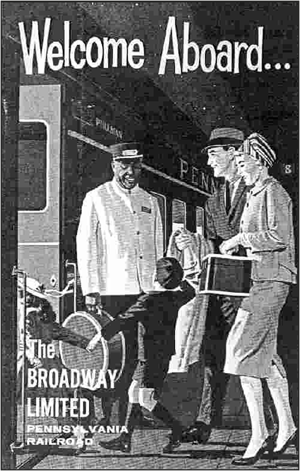 IT’S A REAL PLEASURE to have you aboard the Broadway Limited . . . one of the world’s finest trains. Travel comfort isn’t something that accidentally happens . . . it has to be carefully planned. That’s why modern conveniences and luxury have been built right into all the cars on the Broadway Limited. And the Broadway has a specially trained staff . . . a staff which makes personal service and passenger comfort its first interest and concern. Whether you are in a cozy roomette, or a spacious master room, we want you to feel that the Broadway Limited is your home away from home. Have a pleasant trip.
IT’S A REAL PLEASURE to have you aboard the Broadway Limited . . . one of the world’s finest trains. Travel comfort isn’t something that accidentally happens . . . it has to be carefully planned. That’s why modern conveniences and luxury have been built right into all the cars on the Broadway Limited. And the Broadway has a specially trained staff . . . a staff which makes personal service and passenger comfort its first interest and concern. Whether you are in a cozy roomette, or a spacious master room, we want you to feel that the Broadway Limited is your home away from home. Have a pleasant trip.
– submitted by Dr. Fred Ripley
A glimpse into Dr. Fred Ripley’s Pennsylvania Layout
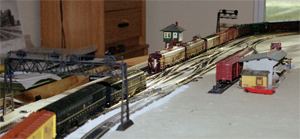 At the 4-track interlocking at Smithville, OH (MP 129.5 from Pittsburgh on PRR’s Pittsburgh-Chicago main line), we see two scenes, taken two years apart. In April 1958, coming out of the sunrise and facing the camera, is the westbound New York-Chicago “Admiral”, a maid-of-all-work schedule with significant head-end traffic as well as coaches, a diner, and sleepers, right on schedule at 7:48 AM. A pair of E-8’s (which the PRR calls EP-22’s) is the power.
At the 4-track interlocking at Smithville, OH (MP 129.5 from Pittsburgh on PRR’s Pittsburgh-Chicago main line), we see two scenes, taken two years apart. In April 1958, coming out of the sunrise and facing the camera, is the westbound New York-Chicago “Admiral”, a maid-of-all-work schedule with significant head-end traffic as well as coaches, a diner, and sleepers, right on schedule at 7:48 AM. A pair of E-8’s (which the PRR calls EP-22’s) is the power.

About to meet No. 51 is eastbound CS-6, a Chicago to Conway freight, running slightly behind schedule & powered by two FM “Erie-Builts” (FF-20’s to the PRR).
Main line-eastern: Conrail and Norfolk Southern on the east end of the Pennsylvania Railroad’s Pittsburgh, Ft. Wayne, & Chicago, 1988-2009
Program Preview:
The Pennsylvania Railroad’s four-track main line east from Pittsburgh is justifiably one of, if not the, most famous and photographed pieces of railroad in North America. Less well known, but just as fascinating, are the “Lines West” main lines from Pittsburgh to Chicago and St. Louis. In this program I’ll focus on the eastern end of the former, which was built as the Pittsburgh, Fort Wayne, and Chicago and became the PRR’s Eastern Division between Pittsburgh and Crestline, OH. We’ll examine this piece of the railroad beginning around giant Conway Yard northwest of Pittsburgh and extending to Alliance, OH, where (in NS’s routing of traffic) nearly all trains turn north towards Cleveland and the former NYC mainline.
The Pennsylvania Railroad’s four-track main line east from Pittsburgh is justifiably one of, if not the, most famous and photographed pieces of railroad in North America. Less well known, but just as fascinating, are the “Lines West” main lines from Pittsburgh to Chicago and St. Louis. In this program I’ll focus on the eastern end of the former, which was built as the Pittsburgh, Fort Wayne, and Chicago and became the PRR’s Eastern Division between Pittsburgh and Crestline, OH. We’ll examine this piece of the railroad beginning around giant Conway Yard northwest of Pittsburgh and extending to Alliance, OH, where (in NS’s routing of traffic) nearly all trains turn north towards Cleveland and the former NYC mainline.
These 60 miles of railroad, even in the modern era, give a wonderful sampling of the PRR west of Pittsburgh: physical plant ranging from heavy-duty four-track to the classic Lines West double-track; topography both hilly and flat; and more freight traffic on this segment than even in PRR days. The appeal of this stretch of the PRR has long been heightened for me by the fact that nearly all the remainder of the railroad west of Pittsburgh has been chopped to pieces, much of it reduced to semi-local operations or simply gone.
With an eye towards the history of the railroad, we’ll see lots of action from the last ten years of Conrail and NS of recent years- big trains in great scenic main line settings, with lots of PRR position light signals, in all seasons and weather. Anyone with an interest in the PRR and its successors, or who just enjoys contemporary big-time railroading, won’t be disappointed.